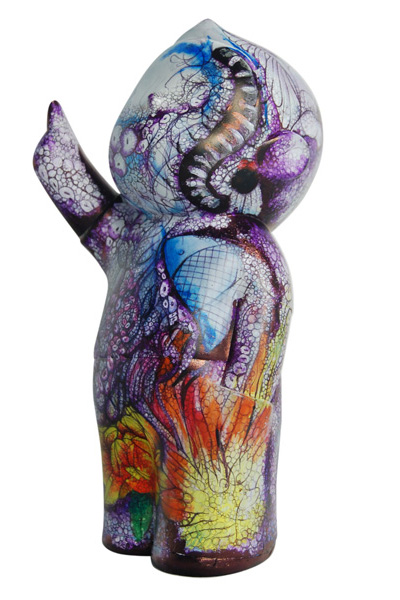
曾嘉琪 Monica Tsang
[ Product designer ]
[ Product designer ]
Monica Tsang graduated at The Hong Kong Polytechnic University majoring in Product & Industrial Design. In 2005, she exchanged to Kunsthochschule Berlin-Weissensee (Germany) and participated in the Siemens VDO Project.
She recently finished her master of ceramic design at Staffordshire University, UK.
In 2006, her final year project "Plate Tectonics" won the Red Dot Design Concept Award. In 2007, "Stacked" mug was exhibited at "handled with care", a contemporary UK ceramics exhibition, and the Tokyo Design Festival. She also won the Hong Kong Young Design Talent Award in the same year.
In 2009, her designs Entomo 1 and Temptation jar were shown at the British Ceramics Biennial & London Design Festival. She worked as a placement at prestigious British ceramics brand Wedgwood.
In 2010, Entomo 1 was shortlisted for the House and Garden Classic Design Award and the Batch Award of the British ceramics biennial. She is selected to be one of the best graduate in UK, 2010 by E-Creative Award, UK.
Currently, she has her own design studio. Most of her designs are available in many famous department store e.g. Lane Crawford (HK), Liberty (UK), TableArt(USA).etc.
She is working a new tableware project with Michelin chef for his London 's restaurant.
She recently finished her master of ceramic design at Staffordshire University, UK.
In 2006, her final year project "Plate Tectonics" won the Red Dot Design Concept Award. In 2007, "Stacked" mug was exhibited at "handled with care", a contemporary UK ceramics exhibition, and the Tokyo Design Festival. She also won the Hong Kong Young Design Talent Award in the same year.
In 2009, her designs Entomo 1 and Temptation jar were shown at the British Ceramics Biennial & London Design Festival. She worked as a placement at prestigious British ceramics brand Wedgwood.
In 2010, Entomo 1 was shortlisted for the House and Garden Classic Design Award and the Batch Award of the British ceramics biennial. She is selected to be one of the best graduate in UK, 2010 by E-Creative Award, UK.
Currently, she has her own design studio. Most of her designs are available in many famous department store e.g. Lane Crawford (HK), Liberty (UK), TableArt(USA).etc.
She is working a new tableware project with Michelin chef for his London 's restaurant.
Cells
My design is based on this cell concept: It express the meaning of different kinds of design talents forming a part of Hong Kong's ecology. And this power becomes stronger and stronger. But the idea of a being consisting of cells would be incomplete without showing the actual "organs" as we could call it that the cells are forming.
Springing out of my ceramics design background, I used traditional iconic tableware patterns like dragons, oriental flowers from the king dynasty to Local Hong Kong pattern designs from the 1940s (Cock and fish) and finally my own designs (insects). This reflects the development of Hong Kong in terms of design. We can find older images on the bottom side of the figure. These symbolize the most essential body parts that are required for further development. Moving up to the top of the figure the beholder can see a design evolution. The latest designs on the figures head finally represent the most highly developed organs of the human.
Springing out of my ceramics design background, I used traditional iconic tableware patterns like dragons, oriental flowers from the king dynasty to Local Hong Kong pattern designs from the 1940s (Cock and fish) and finally my own designs (insects). This reflects the development of Hong Kong in terms of design. We can find older images on the bottom side of the figure. These symbolize the most essential body parts that are required for further development. Moving up to the top of the figure the beholder can see a design evolution. The latest designs on the figures head finally represent the most highly developed organs of the human.